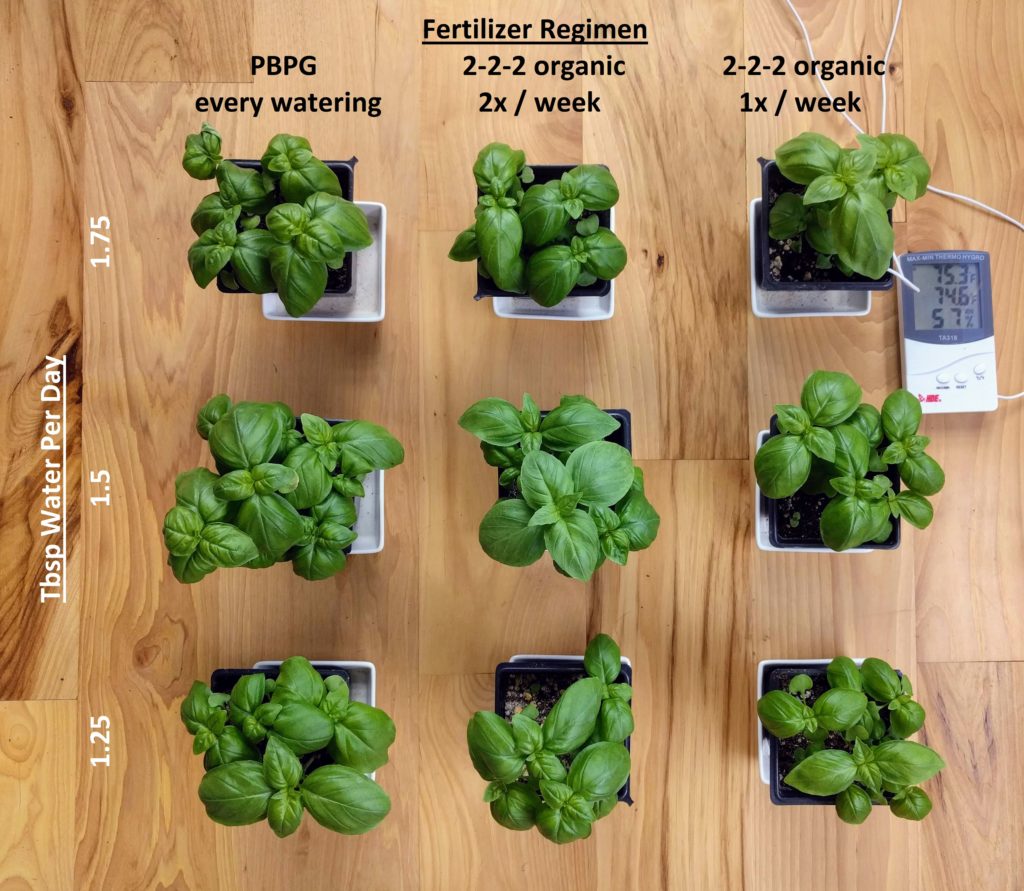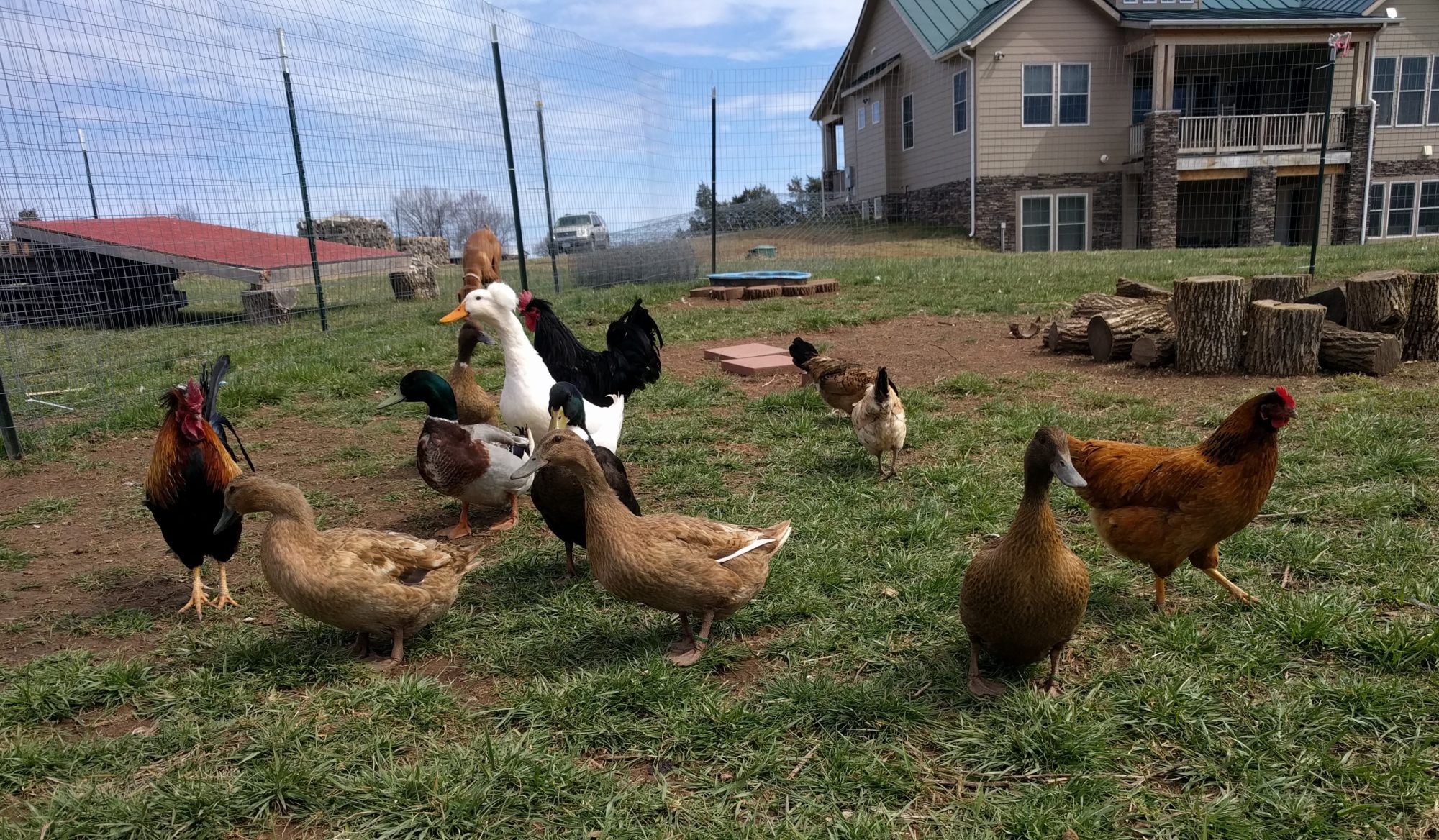
We concluded our first basil trial on September 8 when the plants hit the 6-week mark. The overall results were our best yet, but still not worthy of bringing to market. So we started a second trial, pictured above, on September 16. In this new trial, we’re taking a deeper dive on the watering amount, and also further exploring the realm of liquid fertilization.
In trial #1, we saw that 1.5 tablespoons of water per day gave us the best growth, whereas 1 and 2 tbsp water / day weren’t as good. So now we’re looking at 1.25, 1.5, and 1.75 tbsp water / day to see if we can improve our accuracy. And for fertilization, the 2-2-2 organic fertilizer that we used in trial #1 gave us the best result when used once per week (as opposed to once every 2 or 3 weeks). So we started with that once-per-week plan as the baseline and added a twice-per-week with 2-2-2 fertilizer, as well as an entirely different fertilizer applied every watering. This other fertilizer (Botanicare Pure Blend Pro Grow) isn’t organic, which isn’t ideal in our opinion, but is commonly used in hydroponic setups, so we wanted to see if we could learn anything from it.
A very important point with this trial is that we’re now adjusting all of the water used in the trial to have a pH of approximately 6.0. We got a pH test kit beforehand and it showed that our tap water is more or less neutral (pH 7.0), and we’ve heard that basil (and most plants in general) prefer a slightly acidic water, around pH 6.0. Given that the results are noticeably better across the board, we believe this pH adjustment has been beneficial.
Anyway, so that’s the setup. So how have things fared so far? Substantially better than last time. Across the board. Noticeably faster growth, bigger leaves, no signs yet of disease or malnutrition, though at 3 weeks in, it might be a bit early for those sorts of issues to emerge. As said in the prior paragraph, this 6.0 pH water could be a big factor. But these higher dosages of fertilizer are also helping. Generally, the story that seems to be emerging is that, because the required growth time for mature basil is so long (4 – 6 weeks or more), the soil alone doesn’t have enough nutrition to support the plant for the duration. Without supplemental fertilization, the basil will eventually deplete the soil’s nutrients and then begin to wither.
So it seems we’re on a bit of a fertilization spectrum here… where on one end of the spectrum, the plant gets 100% of its nutrition from soil with no fertilizer added… and the other end is essentially hydroponics (no soil, 100% fertilization). We’re somewhere in the middle, I suppose… certainly not hydroponic, but not really able to work around these fertilization needs. Again, the goal is to be able to do this year-round, and we can’t grow basil outside in the winter… hence we move indoors under lights. If we could grow outside in the garden, then the “pot” size per plant is as wide as the roots will go… plenty of nutrition available outside. So inside, it seems there needs to be some supplementation for these longer growth periods. This sort of fertilization requirement isn’t as big a factor with microgreens, as they only grow for a week or two before consumption, so the nutrients in the soil alone are sufficient.
We’re still plugging away every week with all of our usual farm activities. Our salad mix production took a big hit during the hot periods of July and August, but it’s starting to ramp back up now that the cooler weather is returning. Cherry tomatoes are still hanging on and we have plenty of peanuts (one row still left to harvest in the next week or two). We’ll have a few cartons of unreserved eggs at the market tomorrow, as well as a big lineup of microgreens. Stay well and hope to see you!
